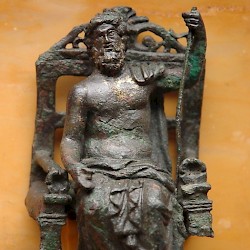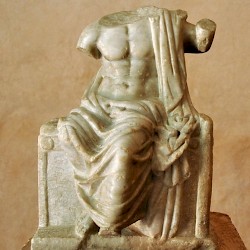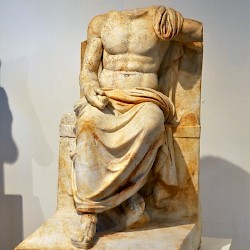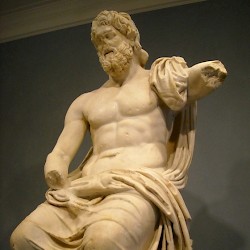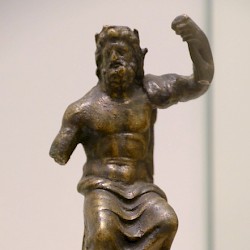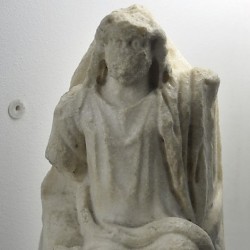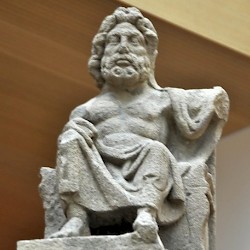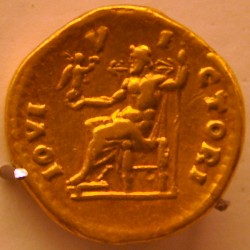Olympia, Phidias' statue of Zeus
Q46239Zeus of Phidias: statue of the Greek supreme god Zeus in Olympia, one of the Seven Wonders of the Ancient World.
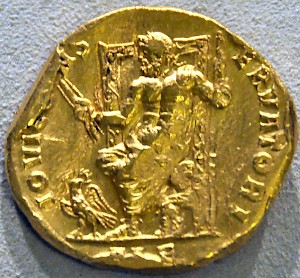
The Athenian sculptor Phidias already had a great reputation when in 437 BCE he and his colleagues Colotes and Panaenus settled in Olympia to make the statue of the supreme god of the Greeks, Zeus, in whose honor the Olympic Games were celebrated. Their workshop has been identified and excavated.
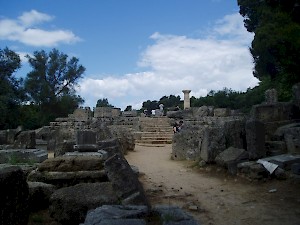
The statue, which stood in the Temple of Zeus, is now lost, but is shown on countless coins and gems, and was described by the Greek author Pausanias. From this evidence, we known that the god was shown as a seated figure of about twelve meters high. In one hand, he carried a statue of Nike, in the other a scepter. All kinds of other figures, like lions and sphinxes, warriors fighting against Amazons, more Nikes, and mythical beasts surrounded the main body. The statue was made of gold and ivory, and was carefully repaired when necessary.
In the fourth century CE, when the statue was almost eight centuries old, the Roman emperor Constantine the Great ordered it to be dismantled, and had it transported to Constantinople, the new capital of the Roman empire. The subsequent history of Phidias' Zeus has not been recorded.
